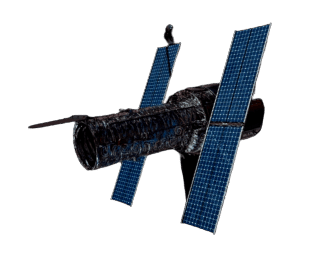Where technology and innovation come together
Flight Vehicle Modeling and Control Analysis Services
Flixan Engineering Services specializes in flight vehicle dynamic modeling, flight control design and spacecraft attitude control. We have many years of experience, magazine publications, books, and numerous patents in active vibration control, vibration isolation, and flight vehicle modeling methodologies, US patents: US8380473, US8706460


Flixan
Flight Vehicle Modeling, Control Design and Analysis Program
Flixan® is a Windows® based program used for modeling flight vehicle dynamics, designing and analyzing flight control systems. It creates linear dynamic models of flight vehicles and spacecraft for simulations, control design, stability and performance analysis and analyzes system robustness to parameter uncertainties. It is a collection of modeling, design and analysis programs and utilities that can be used to model and analyze a wide range of conceptual flight vehicles, such as, aircraft, gliders, spacecraft, space shuttles, space stations, launch vehicles, rocket planes, missiles, reentry vehicles, etc. It was motivated by the need to create and analyze dynamic systems of different types of vehicles, starting from simple to complex models, and to design control laws relatively fast.


The complexity of the dynamic models may vary and it is defined by the user. Many examples are included for reference and they are described in detail. We typically begin with a simple rigid body model for preliminary analysis and it is gradually increased in complexity to include high order dynamics with many structural modes, aero-elasticity, propellant sloshing, actuator and sensor dynamics, tail-wags-dog dynamics, hinge-moments, wind disturbances, etc. The vehicle configuration and complexity are defined in the input data. The vehicle models may include any number of thruster engines, reaction control jets, aerosurfaces, control moment gyros, reaction wheels, bending modes, propellant sloshing tanks, rate gyros, accelerometers, etc. The program is often used in modeling structural flexibility, in both, atmospheric vehicles and space structures. It uses a methodology of selecting and scaling structural modes from finite element model outputs and combining the modes with the rigid vehicle model. It is also used to model propellant sloshing in tanks, and TVC actuators. Many examples are included. The quality of our product has been successfully tested on real flight vehicles, such as the Space Shuttle, Space Station, launch vehicles etc.
The Flixan® program includes a variety of other tools for designing and analyzing control systems. It includes programs for analyzing new vehicle concepts using static analysis, effector trimming tools, and analyzing static performance and maneuverability of early vehicle concepts from preliminary data prior to dynamic modeling. There are also programs for modeling flexible structures, selecting flex modes, modeling and analyzing system robustness to internal or external parameter uncertainties, modeling hydraulic and electro-mechanical actuators, combining multiple types of effectors together, and other utilities for creating, combining, discretizing and modifying systems, file management utilities, etc. The models can either be analyzed within Flixan® or they can be exported to Matlab® for further analysis. In addition to marketing the Flixan program we are also offering consultation on the program itself, or in more general, consultation in atmospheric vehicles and spacecraft modeling, 6DoF simulations, and in flight-control design.
Design Examples
We demonstrate our services and design tools by a multitude of vehicle modeling and design examples that range from launch vehicles, rockets, atmospheric aircraft, reentry gliders and spacecraft. The models include TVC engines, aerosurfaces, actuators, RCS jets, momentum exchange devices, structural elasticity, propellant sloshing and other details that demonstrate our vehicle modeling and design skills. The control design section focuses on flight control demonstrations and tools. At Flixan, we have a strong eye for detail, so nothing is left out. Our patent technology is already a success, and we want to bring you on board.
About
Eric Falangas Short Biography
Retired, lead engineer and project manager at Boeing, Rockwell International and at Aerospace Corporation. Specialized in flight control design, dynamic modeling, spacecraft attitude control, vibration control and active vibration isolation in mechanical structures. Education: BS Electrical Engineering from the University of London, MS in Control Systems from the University of Manchester, England (1974), plus additional courses towards PHD in Aerospace Engineering at the University of Southern California (1980-1990). Work: Space Shuttle GN&C, Space Station, X-33, X-40, X-37 and other proprietary reentry vehicles, air launched vehicles, and surveillance satellites. More recently (2019-2023): Consultant at Relativity Space and Blue Origin. Designing the Terran launch vehicle control system, Spacecraft ACS, and 6DoF simulations.
Specialized in flight vehicle dynamic modeling, control system design, actuator modeling, simulations, TVC design, control/ flex structure interaction, propellant sloshing, spacecraft attitude control using reaction wheels, control moment gyros and reaction control jets. Created the Flixan program after retiring from Boeing. Paper publications and author of book: “Performance Evaluation and Design of Flight Vehicle Control Systems”, IEEE Wiley 2015. Patents in active vibration isolation using piezo-electric actuators and in Modeling Dynamic Characteristics of Flight Vehicles that were implemented in the Flixan program.







